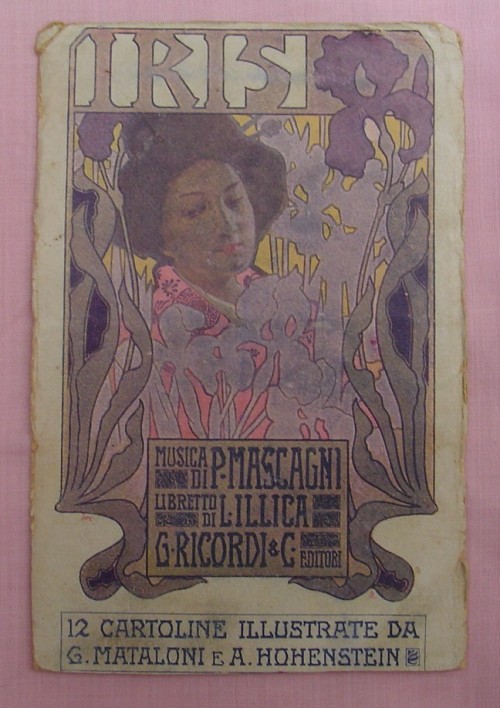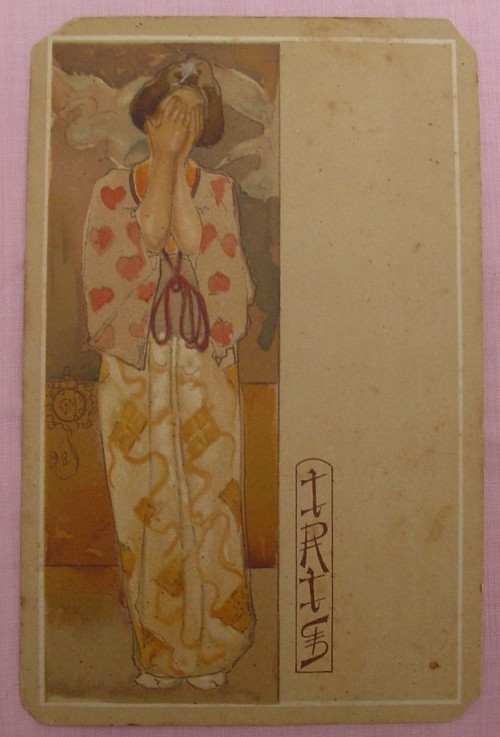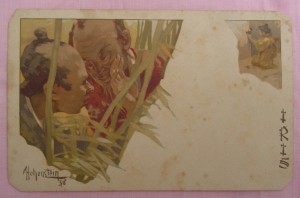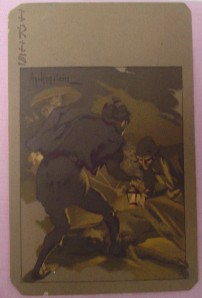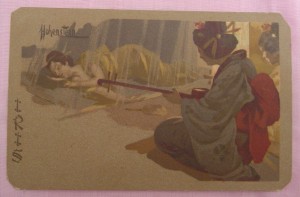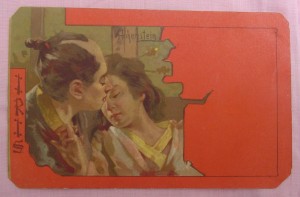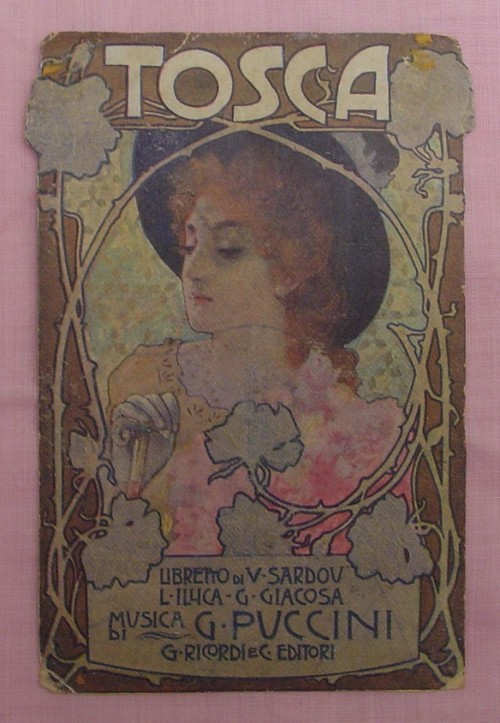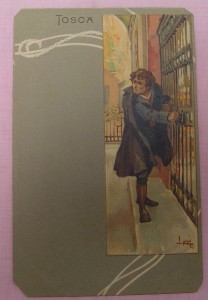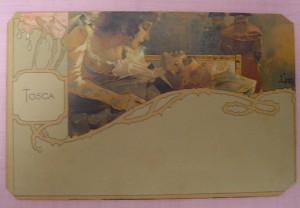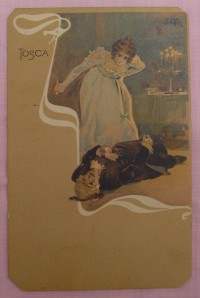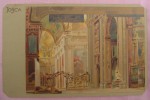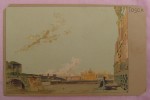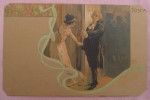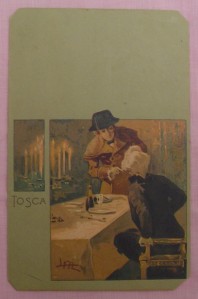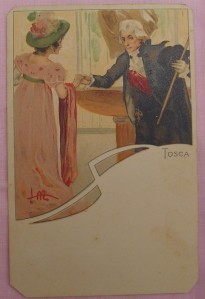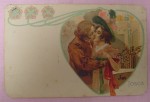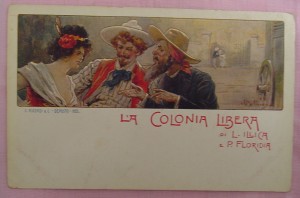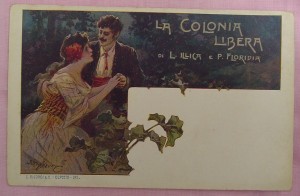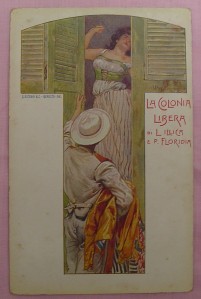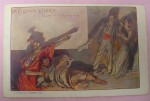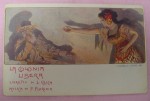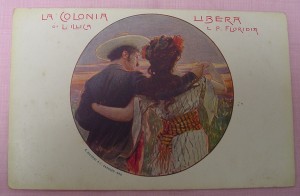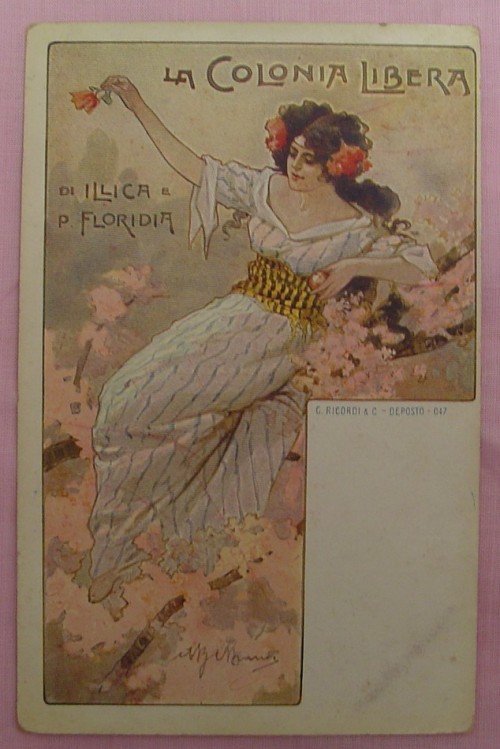Postcards represent a major category in the world of old paper collectibles.
What to collect can be divided roughly into two categories. There are view-cards representing scenes of various locations, which form the bulk of cards produced. And then there are topicals that represent everything else. Topicals can be distinguished by their physical appearance, the method of printing, and most often the subject matter depicted. The topics that are popular with collectors constantly shift over time.
Opera cards fall into a number of categories: opera houses, opera singers, pictures of real productions or artist’s fantasies.
Within my online album you will find part of my opera’s postcard collection.
In the years before movies became ingrained in popular culture, opera played a more important role. Any educated person would have been familiar with at least the most well known operas, their composers, and major performers. G. Ricordi & Co. published hundreds of opera-themed postcards that the public collected and mailed with especial enthusiasm.
Casa Ricordi is a classical music publishing company founded in 1808 as G. Ricordi & Co. by violinist Giovanni Ricordi (1785-1853) in Milan, Italy. Its classical repertoire represents one of the important sources in the world through its publishing of Rossini, Mascagni, Donizetti, Bellini, Verdi, and Puccini.
The company decided in 1874 to create an in-house printing operation to promote its music. It began by installing the most advanced German lithographic presses and hiring a brilliant master, Adolf Hohenstein, to train a staff of Italian artists. Under the tutelage of Adolf Hohenstein, a brilliant stable of graphic artists emerged at Ricordi. Artists including Leonetto Cappiello, Luigi Emilio Caldanzano, Ludovico Cavaleri, Marcello Dudovich, Adolfo Hohenstein, Franz Laskoff, Achille Beltrame, Leopoldo Metlicovitz and Giovanni Mataloni brought Art Nouveau, known as Stile Liberty in Italy, to a world class level.
With almost two hundred years of history behind it, Casa Ricordi is the oldest Italian music publishing firm still in business.
“Iris” by Adolf Hohenstein and
Giovanni Maria Mataloni – 1898

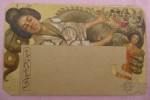

This is the complete collection of postcards from Iris. These beautiful cards were designed by Adolf Hohenstein and Giovanni Maria Mataloni, for the world premiere of Iris. Art nouveau accents and neglected style combine to make this a truly special set. They were allegedly published twice, once with a blank back and once with a printed back.
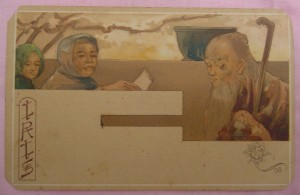
Iris is an opera in three acts by Pietro Mascagni to an original Italian libretto by Luigi Illica. Its first performance was at the Teatro Costanzi in Rome on 22 November 1898.
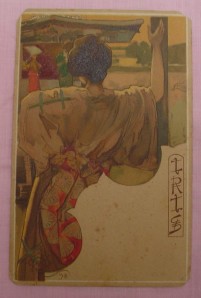
Adolf Hohenstein (1854-1928)
Russian by birth, he studied art in Vienna, where he produced his first paintings. After numerous journeys (during which he stayed in India, where he decorated the homes of the local nobility), he arrived in Italy in 1879. He settled in Milan, the economic and industrial capital of the newly formed Italian state, and began working as a set designer and costumier at La Scala, with excellent results. This brought him into contact with important composers. Soon, however, he began working in the field of graphics, becoming coordinator of editorial promotion for Ricordi. Giulio Ricordi appointed him as art director, with a project that included the creation of covers for libretti and musical scores, posters, playbills and postcards. This was the context in which Hohenstein produced his designs, including those for Iris, La Bohème, Falstaff, Tosca and Madam Butterfly. Hohenstein was also responsible for the macabre deathbed sketches of Verdi drawn at various hours. He worked for Ricordi for about fifteen years. His cultured and refined style was never strongly influenced by the trends of the period: art nouveau, for example, makes an appearance only in a few decorative elements.
Giovanni Maria Mataloni (Roma, 1869-1944)
The imagery and chiaroscuro shadings typify not only Mataloni’s work but that of Metlicovitz and Dudovich from about 1898 to 1910. But far from being an imitator, he in fact preceded those colleagues at Ricordi printing, where he arrived in 1890. He brought Art Nouveau to Italy.
Metlicovitz’s art nouveau “Tosca” set – 1900
Here’s a set of the opera Tosca done by renowned illustrator Leon Metlicovitz, and published by Ricordi. It consists of twelve postcards. The images were originally created in watercolor form.
Tosca is an opera in three acts by Giacomo Puccini to an Italian libretto by Luigi Illica and Giuseppe Giacosa, based on Victorien Sardou’s drama, La Tosca. The work premiered at the Teatro Costanzi in Rome on January 14, 1900.
The earliest postcards from this set are numbered:
060 – Tosca laying over Cavaradossi’s body.
061 – Angelotti, an escaped political prisoner, takes refuge in a side chapel.
062 – Tosca hovering over the tortured Cavaradossi.
063 – Tosca with knife after stabbing Scarpia.
064 – Inside the church.
065 – Tosca and the dead Cavaradossi alone on top of the Castel Sant’Angelo.
066 – Scarpia offering his hand to Tosca.
067 – One of Scarpia’s henchmen delivering news.
068 – Cavaradossi painting while the sacristan looks on.
069 – Scarpia offering holy water to Tosca.
070 – Cavaradossi kissing Tosca.
071 – Cavaradossi in front of the firing squad.
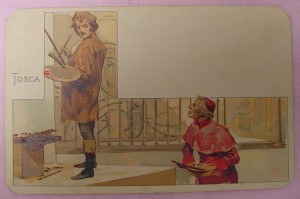
Leopoldo Metlicovitz (Trieste, 1868 – 1944)
Like Hohenstein, he was a commercial artist, lithographer, painter, and graphic artist. He did many opera designs and many of his creations found their way to posters, postcards, and other paper media to advertise new operatic works or Italian products. His postcards can be identified by an “LM”.
“La Colonia Libera” by Achille Beltrame – 1899
Seven full-color souvenir postcards depicting the various scenes from the opera “La colonia Libera”, signed by Achille Beltrame.
Pietro Floridia (1860-1932)
Studied with Beniamino Cesi, Paolo Serrao and Lauro Rossi. As a young student he wrote and published several compositions for piano and at the age of 22 he produced his first opera “Carlotta Clepier”. After the Great success of “Maruzza” he composed “La Colonia Libera”, an opera based on Bret Harte’s “M’Liss” with libretto by Luigi Illica. This opera had its debut in Rome at the Costanzi theater (now called Teatro Dell’opera) on May 7Th 1899.
Achille Beltrame (Arzignano, Vicenza 1871 – Milan 1945)
A pupil of Giuseppe Bertini, in Milan, Achille Beltrame was the most famous and celebrated illustrator in Italy in the first half of the 20th Century. Beltrame edited most of the cover pages of the magazine “La Domenica del Corriere”, published by the Milanese newspaper “Il Corriere della Sera”, from its foundation in 1899 until 1945.
